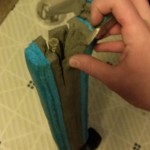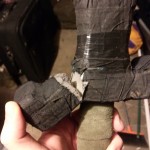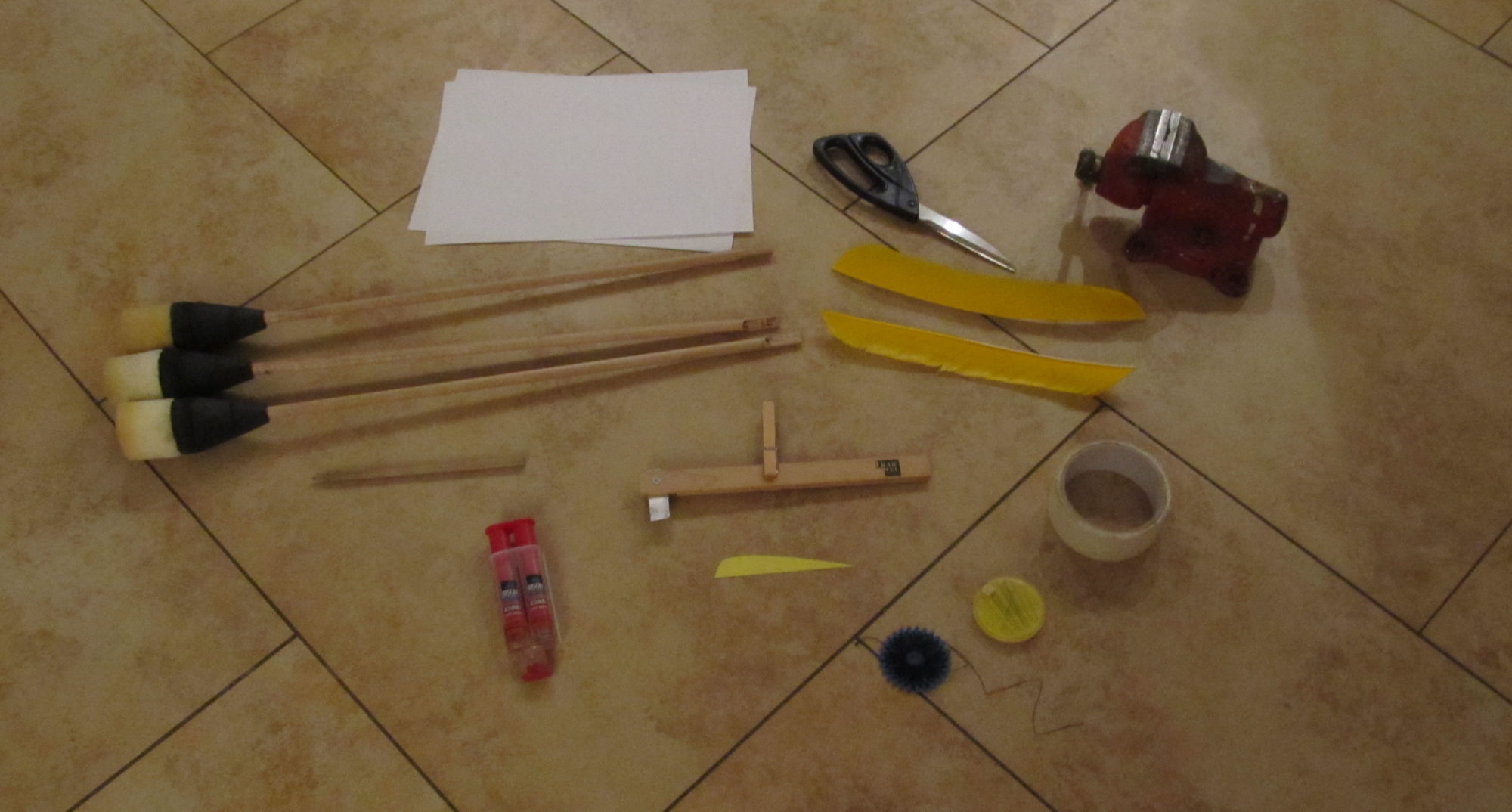We play a rough and tumble game, so no boffer weapon can stay pristine forever. Knowing how to repair a weapon is a useful talent, which will prolong the life of your equipment and keep your wallet happy. Lets run down some common problems you’ll see, and how to repair them.

Blade Loosening
A loose blade will require a complete blade rebuild to fix. After detaching, the core will widen out the foam around it. This means taking the blade off to re-dap the inside doesn’t fix the problem. Twisting tips or a rattling blade can be signs that the foam has detached from the core. It will get worse with time, until the point of catastrophic failure. Don’t let your swords get that bad. If your handle is still good, you can keep using it, but you’ll need to redo the blade.
Blade Dents
These commonly happen when a sword is left leaning against something hard, or packed in a bag or trunk for too long. Most of the time, leaving it out for a day or two is enough for the foam to rebound into its original shape. To avoid this problem, make sure there’s no pressure on the blade when you store them.
If the dent persists multiple days with no improvement, you may have to replace a part of your blade. See the next section for details.
Blade Chips
Blade chips happen if your sword catches hard objects (like armor) at a bad angle, tearing a chunk out of the foam. If the tear is minor (only torn through one layer of foam) you can get away with “patching” your blade. Cut away the top layer of foam around the damage, and peel it off. If you’ve dapped it right, this can be a little tricky. Work slowly and carefully, you don’t want to tear up the foam underneath this layer. Clear off any remaining bits of foam with a razor or sandpaper. Cut a new strip to fit the gap, and glue it down. Remember to let the glue become tacky, as this creates a stronger bond than immediately applying the foam. The foam might look a little out of place at first, but general usage should cause it to compress down a bit.
The newly patched blade is slightly less strong, because there’s no longer a single piece holding the outside of the blade together. For this reason, don’t patch your swords indefinitely. Replace the blade if you need to patch it again, and politely ask your opponents to stop wearing gear that might tear a blade.
Pommels
Look out for loose pommels. It can be difficult to tell sometimes because the tape should be securing it. Don’t rely on tape though, as it can come apart in cold or wet weather. If your pommel starts rotating or sliding, its time to make a new one. You may be able to get away with re-gluing the old pommel, but don’t expect that to last more than an event or two.
Strong taping can help keep a pommel attached. If you swing from your pommel, you’ll also put extra stress on it. If your pommels are still coming off, try making a “taller” one that has more contact with your core. Your handle will be somewhat shorter, but the pommel will be much stronger.
Another common problem with pommels is foam compression. If you start to feel core through the end of your pommel, it’s time to make a new one. As a stop-gap you can dap down another layer of foam on the end and cloth tape over it, but this isn’t durable and shouldn’t be relied upon.

Guards
A guard will often degrade in two ways. Either the entire guard will detach from the core (requiring it to be completely rebuilt) or the foam will tear along a stress point. This is often the result of contact in battle, in which case congrats. Your guard is doing it’s job. Improper storage can be another culprit. As with the blades, ensure there’s no weight resting on the guard.
If the blade or pommel/grip are not being replaced, you’ll have to go with the Vertical Box Method, and not the Horizontal Stack Method.
Stab Tip
These are one of the most common wear issues. Either your stab tip comes off, or it compresses down to an unsafe level. It’s generally a good idea to build a new stab tip in either case, unless it’s a brand new stab tip that came off. We at foamsmithing like using yoga mat for stab tips, and will have a complete tutorial available soon.
Grip Wrap
Sometimes you can reapply a grip, but other times you’ll need to replace it entirely. If the covering (rope or leather) has come off, try reapplying it with a stronger adhesive (dap and double sided carpet tape are the best choices). Make sure to attach it tightly, because loose edges or creases cause the grip to weaken faster. Tape over the very top and bottom of your handle to keep the leather or rope down securely. Be sure when re-gluing the grip that you are keeping the material taught and flat to the handle.
If something deeper in your grip comes off (either the shaping or counterweights), you’re in for a complete handle rebuild. It can be a little tricky fitting one in between a blade and pommel, so perhaps this is a good time to replace one of those components as well.
Covers
Hand sewn covers commonly pop seams. Its fairly straightforward to pop it off and resew it back. Use a sewing machine for a more durable cover. Ninety nine times out of a hundred it will result in a better seam than hand sewn.
A stocking cover may accumulate tears or runs. You can replace these of course, but your best option is simple avoidance. Don’t let your swords touch gravel or asphalt, and don’t pack them with damaging items like armor. A double stocking cover (tape one on, then tape another over the top) can cover up tears, but it won’t prevent them any better.
Covers will also come loose if they’re secured with cloth tape. To avoid this, spiral wrap high quality cloth tape around the end of the cover. You’ll want to go around the blade at least twice. Try and keep your blade out of moisture, since that will loosen cloth tape quickly.
Broken Core
Sorry pal, you’ve got to replace the entire weapon.
